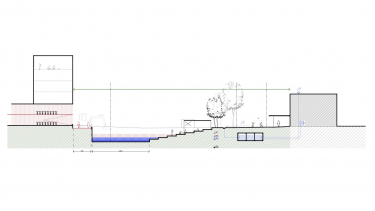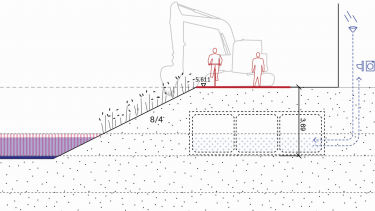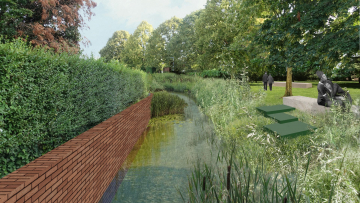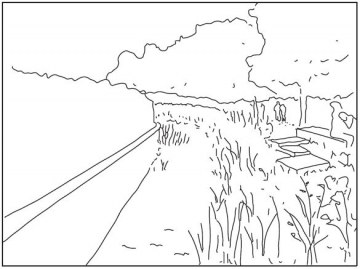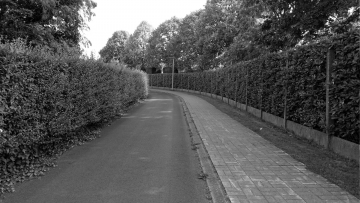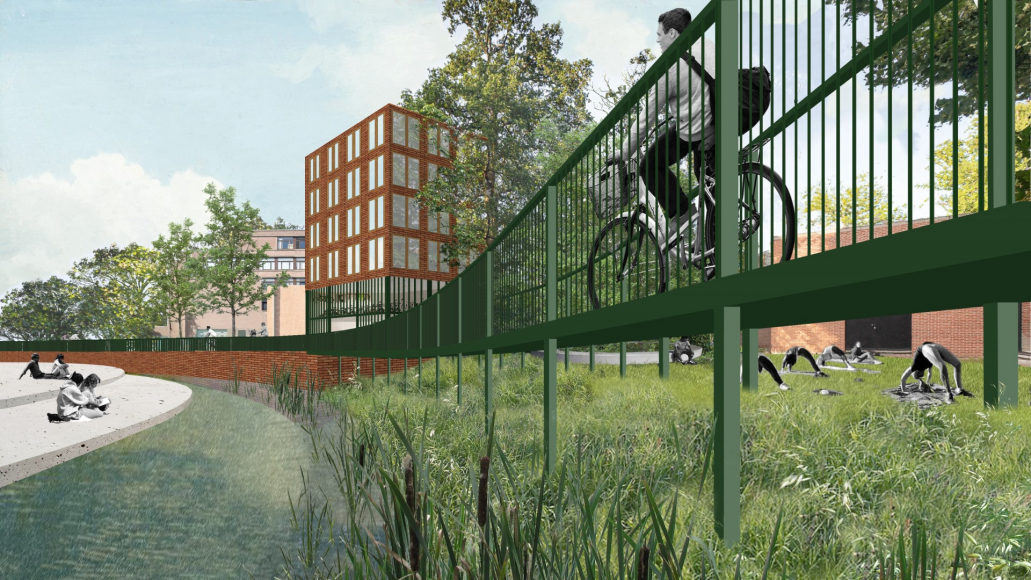

The Kerkebeekpark in Bruges
Questions? Let's get in touch.
From grey to green infrastructure
The resurfacing of the 'Kerkebeek' and the redevelopment of the 'Kerkebeekpad' as a cycling and walking path was an assignment for the City of Bruges, initiated by the European project 'Nature Smart Cities'. Where classic watercourse resurfacing projects mainly focus on grey infrastructure, we structurally and thoroughly searched for green added value; from grey to green infrastructure! That's why we've deployed the principles and tools for determining and calculating ecosystem services from the very first phases of the project. This has been crucial for the success of this sustainable and climate-adaptive spatial framework plan.
